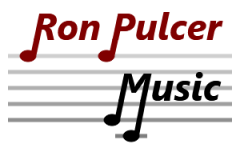This tune by English composer Edward Elgar was composed as a march. So it is fitting to have a 2/4 time signature. I first learned the melody and chords for this tune from a simple arrangement for piano.
From there I set about trying to make this work as a guitar instrumental. The bass note pattern is pretty consistent throughout with two quarter notes per measure. You easily imagine taking two steps walking per each measure when you hear the bass notes. So I retained the bass note pattern pretty much as-is on the guitar.
The challenge for this tune are the measures where the melody note is a single half-note. On the guitar the sound of the notes can quickly decay after the note starts to play. On the piano, the notes will resonate louder and longer. When a high school or college band plays this tune, the horns can easily hold each note at the right volume for the full duration. However, on the guitar, during two beats the sound drops off (decays quickly).
Since this is a walking tune and I wanted to keep the momentum going, I did a couple things, one rhythmic and the other melody related. I started each measure by playing a chord on beat one (melody note, bass note and one or two harmony notes). Playing the new chord at beat one established a strong rhythm. The top note of chord is the melody. To keep the momentum going I fingerpicked the chords, primarily with eighth notes (4 eighth notes per measure), The exceptions are where the melody has multiple notes and may also involve some syncopation. In those cases, the bass notes keep things going.
In the fingerpicked chord measures, the second eighth note is a inner harmony note or the chord. The third note is a repeat of the bass note (held as second quarter note bass tone). The fourth eighth note is a repeat of the held melody note. So the result is instead of a half-note melody tone, on the guitar this is dotted-quarter note followed by an eighth note (equalling a half-note duration or two beats). The eighth note at the end of measure is almost like a pickup note leading into the next measure and chord, which gives this arrangement a flowing feel. The result I hope is that you can hear the melody such that the tune is recognized, while the fingerpicked notes, including bass notes, maintain the feeling of a march or procession tune.
PDF: Music notation, tablature and chords
MIDI Audio
Continue reading “Pomp and Circumstance: Fingerstyle Guitar, key of G”


